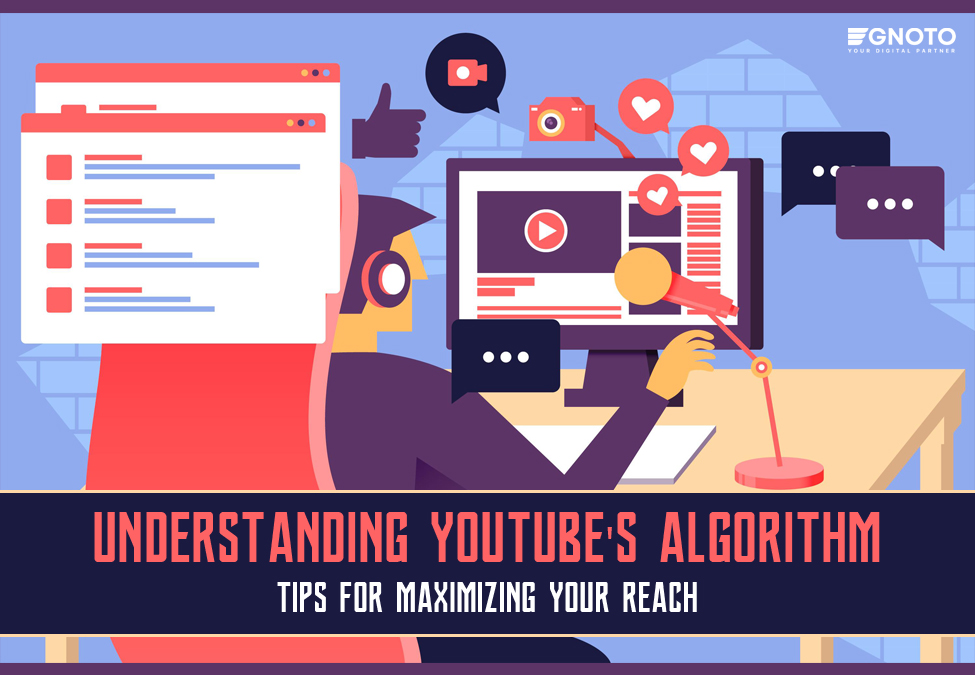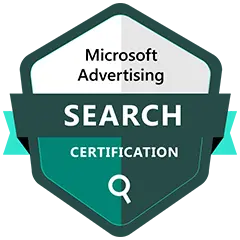Is the YouTube algorithm a mystery for you? We are going to demystify it today through this blog so that you can also get your videos trending on YouTube. Understanding YouTube’s algorithm in one sentence is difficult. Algorithms are written considering several moments of viewers on YouTube.
Well, why does YouTube write such complex algorithms? The aim is simple: to suggest the most suitable video so viewers stay glued to the platform. Creating a video that ranks can become easy if you understand how YouTube works. Algorithms make search predictions based on search terms and what people already searched.
We will explain how YouTube works and its algorithms without going into the intricacies of algorithms or coding. Are you ready to unlock the power of this popular video-streaming platform with us? Let’s begin by understanding what the YouTube algorithm is.
What Is the YouTube Algorithm?
YouTube’s algorithm determines what to suggest to which viewer. It helps suggest videos to viewers based on their interests and behavior on the platform. The app uses deep neural networks to understand patterns, watch time, interest, and favorable times of viewers. This understanding helps offer the most satisfactory videos and pull in viewers quickly.
Precisely written algorithms help users quickly find the most relevant content according to their search query. Because of these algorithms, you, as a YouTube viewer, can find the most satisfactory content on the platform.
Technically speaking, an algorithm is a set of computer instructions. A team of engineers, data scientists, and machine learning experts writes algorithms for YouTube. They use complex mathematical models to process large amounts of data and gain insights.
Don’t worry—you will not have to go into technicality to rank your video. In this blog, we will explain algorithms in the simplest way. If you want to go into technicality, check out this: deep neural networks for YouTube recommendations.
How Does YouTube Algorithms Work?
YouTube says, “Create videos to make viewers happy, not algorithms.” So, it’s clear that YouTube wants creators to focus on making high-quality videos that viewers like. However, knowing the workings of YouTube increases the chances of getting video rank on the platform faster than others who only focus on video quality.
Here are the factors YouTube algorithms consider to rank a video:
- Personalization:
Whatever you watch on YouTube, the algorithms track it. The algorithms record your every move on the platform, including what you like and dislike, how long you watch, what you watch, and when. Every minute detail helps algorithms suggest the most relevant videos. This way, YouTube tailors recommendations for each user on the platform.
Moreover, tracking users’ movements on the platform helps in YouTube search predictions. It allows users to find videos faster, improving their experience. Likewise, the platform saves users time by enabling them to personalize YouTube Ad Settings. YouTube makes it easy for viewers to control what data is being used by the platform.
For example, if you watch travel blogs, the app will track your behavior and recommend similar content, such as “best places to travel in California,” “Travel guide,” “how to plan a trip,” and so on.
- Engagement:
YouTube algorithms track engagement on a video based on metrics like views, likes, comments, and shares. The higher the number of these metrics, the higher the chances of the video being recommended. Engaging videos keep viewers stuck to them for a longer time. This increases overall watch time, which is a sign for YouTube, whether the video is worthwhile to rank.
Additionally, engaged viewers are more likely to share your content, effectively getting new viewers for the video and the channel. You can calculate your video’s engagement with the help of a tool, the YouTube engagement rate calculator.
For example, a video that receives 10,000 views, 500 likes, and many comments signals to the YouTube algorithm that it is more capable of being recommended than others.
- Relevance:
How would you feel when you search for travel destinations in California on YouTube and get results for restaurants in the region? Frustrating, right? Similarly, when users open a video to watch something and get different content, it affects the relevancy factor, which is essential for ranking the video.
Algorithms consider the user’s search query and watch history to recommend the most suitable and relevant videos to users. Algorithms analyze video titles, tags, and descriptions. Overall, the metadata about the video helps YouTube find the most relevant content for the viewer. The app finds the most suitable result for your query in a matter of milliseconds.
For example, if you have searched “Where to travel in 2024”, the algorithm will show you the most suitable videos. For example, “Top 10 Places to Visit in 2024”, “10 INSANELY CHEAP for budget travel in 2024”, and so on. Have a look at the image below.
- Watch Time:
YouTube algorithms track how long a video is being watched, who binge-watches videos, and which type of content it is. Watch time is a vital part of YouTube’s search and discovery algorithms. Watch time is the total number of minutes viewers spend watching your video since its release. It is the total amount of accumulated minutes.
According to a study by Briggsby, there is a strong relationship between watch time and ranking. The correlation between YouTube ranking factors is shown in the image below.
For example, if a 10-minute cooking video has 1000 views and viewers watch an average of 8 minutes each, the total watch time will be 8,000 minutes. It will signal to algorithms the content is engaging.
- Viewer Satisfaction:
Algorithms try to determine how users feel after watching a video. YouTube runs surveys and tracks feedback to gauge viewer satisfaction. It tracks views, likes and dislikes, comments, watch time, subscribers, average daily views, and much more, as mentioned in the image above. YouTube analyzes all the factors collectively to pick videos that suit user’s requirements.
However, most efforts can go in vain if no one watches your video. For this, ranking it at the top is crucial, as searchers tend to click the top results. Moreover, YouTube allows viewers to control what they watch, improving viewer satisfaction.
Top 7 Tips to Maximizing Your Reach on YouTube
Are you a budding creator or a seasoned professional? Maximizing reach can be difficult if you ignore YouTube algorithms and lack the right video creation approach. Here are the top 7 tips to maximize your reach on YouTube.
- Understand How YouTube Works:
“Our algorithm does not pay attention to videos; it pays attention to viewers” YouTube.
Understanding YouTube algorithms should be the first step toward maximizing reach. Putting your best foot forward can increase your videos’ chances of ranking. Once you know how YouTube works, it reduces the chances of mistakes. For example, if you don’t understand how crucial watch time is, you might end up creating short videos.
- Make a High-quality Content:
What is a high-quality video? It is a video on a unique topic with a compelling presentation that can hold people’s attention for more than 15 minutes. Quality considers everything from camera quality to the value the video renders to its viewers. Plan your video before you shoot. Planning includes script writing, understanding the target audience, arranging a high-quality camera, and preparing everything physically and mentally.
- Join the Conversation in Comments:
Video comments are one of the most critical factors for maximizing the reach of your video. By reading the comments, you can find out what people like and dislike about your video. You can also ask them what type of video they like to watch. Videos created based on audience demand are more likely to get higher views.
Well, higher views on a video don’t put it on the top of search results. You may have seen videos with lower views also appear at the top. This is because several factors affect ranking.
- Use YouTube SEO:
If you think a person is sitting in the YouTube office watching your video and deciding whether to rank it, you are wrong. YouTube algorithms handle everything, so you must focus on YouTube SEO. Begin with keyword research with the help of a tool you find the best. Keyword research helps find the topic people want to watch an in-depth video about.
Optimize the videos considering YouTube algorithms. In this optimization process, you will discover many points crucial for YouTube SEO, such as content planning, keyword placement, title, description, etc. Moreover, don’t forget to market your video for quick results.
- Craft Engaging Titles & Thumbnails:
Create an intriguing title for the video that people can’t resist clicking on. Likewise, accuracy plays the utmost role while writing a title because potential viewers can know what is inside the video without opening it by reading the title. Use the most important keywords at the beginning of the title, helping the YouTube algorithms find your video. Put the episode number at the end of the video just before the branding.
Additionally, leverage the power of thumbnails to increase your video’s views. Ninety percent of the best-performing videos on YouTube have engaging thumbnails. You can apply the rule of thirds and give the thumbnail an exciting look.
Here’s an example of a title and thumbnail working together.
- Create Videos Longer than 15 minutes:
Yes, it is crucial if you want to keep viewers watching your video for a long time. It helps you increase your channel’s watch time, a vital signal for YouTube to show your video on top. Likewise, whenever people want to learn something new and gain deep knowledge, they look no further than YouTube. So, covering such information in a video shorter than 15 minutes is difficult. But…
How long is long? You can make a video of 15, 16, 17….25, 30 minutes long, and so on. It depends on your topic, research, and the depth of information you want to share.
And here is the icing on the cake: you can repurpose longer videos into YouTube shorts, effectively increasing your channel’s visibility.
- Focus on Viewer Satisfaction:
Provide what you promise in the title and thumbnail of your video. When potential viewers find what they thought of in the video, they feel satisfied. They come back to the particular channel because it offers value. Create quality content on a unique topic, cover in-depth information, use authenticated sources to collect data, and don’t misguide your audience if you want them back on your channel. So, if you focus on viewer satisfaction, the rest will follow automatically.
Final Thought
Understanding the YouTube algorithm is not difficult. Keep in mind that it works to improve user experience on YouTube. Algorithms track every move of viewers and creators on YouTube to refine its services and offer personalized recommendations to users. They are also effective in ranking the best-performing videos at the top of search results. You can also rank your videos by following YouTube algorithms. For this, create a catchy title and thumbnail for your high-quality videos and present impressive, in-depth information.
Well, ranking on YouTube is relatively easy if you really want to.










